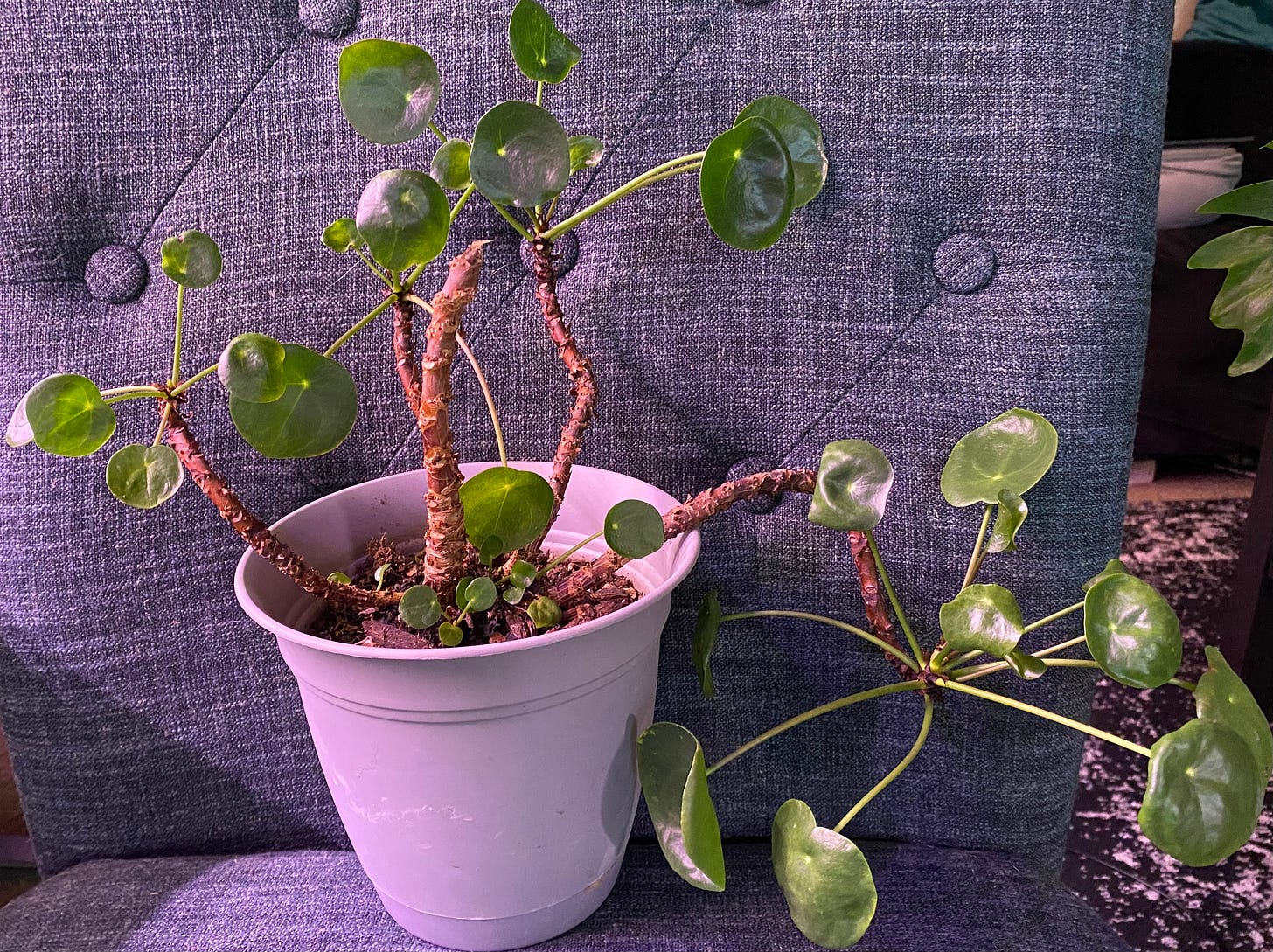The delightfully round Pilea peperomioides has become a popular houseplant in recent years while being relatively new to science. It’s got a kind of crazy back story, detailed in this article, so buckle in. It was first collected by George Forrest in 1906 in the Tsangshan mountains in western Yunnan, China. George Forrest was a Scottish botanist with a pretty cute dog. I offer only the important details here.
The plant was named in 1912 by the German botanist Friedrich Diels and all specimens were subsequently stored in an herbarium in Edinburg. An herbarium, in case you don’t know, is a book with a bunch of plants squished between its pages. It’s a little gruesome, if you ask me. Anyway, then the round little plant was sort of forgotten about. Until the 1970s when botanists at the Kew in London, who had been getting requests for identification from plant parents wanting to know what sort of baby they had been growing, decided to do a little detective work.
Kew botanist Wessel Marais eventually dug into the archives in Edinburg and turned up the preserved specimens that George Forrest had brought back from China in 1906. Using these, they were able to identify the mystery plant.
But that still left another mystery. How did the living plant get from China to people’s living rooms in England? To find that out, another botanist, Robert Pearson published an illustrated article in the Sunday Telegraph on January 9th, 1983. As it turned out, a family with a truly awesome surname, the Sidebottoms, in Cornwall had had a Norwegian au pair 20 years prior. At some point their then 9 year-old daughter had gone to Norway to stay with the au pair’s family for a vacation and had been given a Pilea peperomioides as a gift. That plant was the first known one in England. Here it is probably helpful to mention that one common name of Pilea peperomioides is the friendship plant, because all you have to do is break off a branch, stick it in wet dirt and you have a whole new plant you can gift to a friend. They are extremely easy to propagate, which is how the plant spread all over the UK. I accidentally snapped an arm off of my mother plant, whom I call Roswell, a few days ago. Now I have this little fellow.
Where was I… Oh the mystery, yes. Knowing how the plant had arrived in the UK wasn’t exactly the end to the mystery. Botanists still didn’t know how the plant had gotten to Norway. Remember the au pair?
When botanists asked for help in unravelling this part of the Pilea peperomioides’ journey on a Swedish TV show, they got almost 10,000 responses. One letter told of a Norwegian missionary, Agnar Espegren, who brought the plant to Norway from China in 1946. And that turned out to be the first known P. peperomioides in Europe. Agnar is also the reason the plant is sometimes known as the missionary plant.
So there you have it. Since its re-discovery in the 1980s, botanists have been to China to observe it in the wild. It is allegedly quite rare in its natural habitat due to deforestation, but I wasn’t able to corroborate that beyond this Vox article about how hard to find the Pilea peperomioides once was for plant collectors. Mainly, I can’t corroborate because I don’t know Chinese and Google wouldn’t translate the one page I needed. *sigh* As it turns out, that little dichotomy comes up a lot when I research houseplants. They are very common in living rooms, but near extinct in the wild. Not from harvesting for the plant trade, but from habitat loss. It would be lovely if nurseries would include that detail, plus facts about a plant’s natural habitat, and maybe even conservation information on plant tags. It might help make the world a smaller place.
Anywho, because Pilea peperomioides is not well known to science, we don’t know much about it. It rarely flowers indoors, and when it does, the flowers are only male. That means that all the plants in living in people’s houses are clonal, as in, from a pup or a cutting of another plant, not from seeds.
In addition to being called the friendship plant and the missionary plant, it is also known as the Chinese money plant, the UFO plant, and, in China, mirror grass. They are very easy to grow, just a sunny window and moist soil. With less water, they’ll also thrive in low light conditions. They send new shoots up from their roots, which can be dug up and repotted, but also root easily from cuttings. Mine has gotten aphids, indoors, which is a feat I find a little mystifying, but wiping the aphids off was all it took to solve that problem. Roswell used to have a tall center stalk, but I cut it off and gave it to a coworker, like you do.




